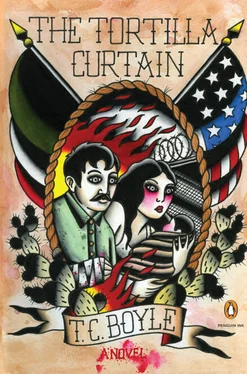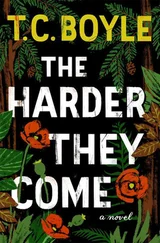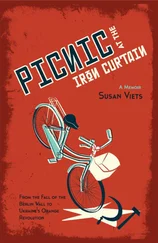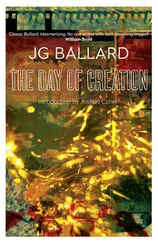T. Boyle - The Tortilla Curtain
Здесь есть возможность читать онлайн «T. Boyle - The Tortilla Curtain» весь текст электронной книги совершенно бесплатно (целиком полную версию без сокращений). В некоторых случаях можно слушать аудио, скачать через торрент в формате fb2 и присутствует краткое содержание. Год выпуска: 2011, Издательство: Penguin Books, Жанр: Современная проза, на английском языке. Описание произведения, (предисловие) а так же отзывы посетителей доступны на портале библиотеки ЛибКат.
- Название:The Tortilla Curtain
- Автор:
- Издательство:Penguin Books
- Жанр:
- Год:2011
- ISBN:нет данных
- Рейтинг книги:4 / 5. Голосов: 1
-
Избранное:Добавить в избранное
- Отзывы:
-
Ваша оценка:
- 80
- 1
- 2
- 3
- 4
- 5
The Tortilla Curtain: краткое содержание, описание и аннотация
Предлагаем к чтению аннотацию, описание, краткое содержание или предисловие (зависит от того, что написал сам автор книги «The Tortilla Curtain»). Если вы не нашли необходимую информацию о книге — напишите в комментариях, мы постараемся отыскать её.
The Tortilla Curtain — читать онлайн бесплатно полную книгу (весь текст) целиком
Ниже представлен текст книги, разбитый по страницам. Система сохранения места последней прочитанной страницы, позволяет с удобством читать онлайн бесплатно книгу «The Tortilla Curtain», без необходимости каждый раз заново искать на чём Вы остановились. Поставьте закладку, и сможете в любой момент перейти на страницу, на которой закончили чтение.
Интервал:
Закладка:
And then they started walking. They walked all day, up and down the streets, through the back alleys, down the boulevards and back again, Cándido gruff and short-tempered, his eyes wild. By suppertime nothing had been settled, except that they were hungry again and their feet hurt more than ever. They were sitting on a low wall out in front of a blocky government buitding-the post ofnce? — when a man in baggy pants and with his long hair held in place by a black hairnet sat down beside them. He looked to be about thirty and he wore a bold-check flannel shirt buttoned at the neck though the air was like a furnace. He offered Cándido a cigarette. “You look lost, _compadre,”__ he said, and his Spanish had a North American twang to it.
Cándido said nothing, just pulled on the cigarette, staring off into space.
“You looking for a place to stay? I know a place,” the man said, leaning forward now to look into América'ey ánto Améris face. “Cheap. And clean. Real clean.”
“How much?” Cándido asked.
“Ten bucks.” The man breathed smoke out his nostrils. America saw that he had a tattoo circling his neck like a collar; little blue numbers or letters, she couldn't tell which. “Apiece.”
Cándido said nothing.
“It's my aunt's place,” the man said, something nasal creeping into his voice, and America could hear the appeal there. “It's real clean. Fifteen bucks for the two of you.” There was a pause. Traffic crawled by. The air was heavy and brown, thick as smoke. “Hey,” he said, _“compadre,__ what's the problem? You need a place to stay, right? You can't let this pretty little thing sleep on the street. It's dangerous. It's no good. You need a place. I'll give you two nights for twenty bucks-I mean, it's no big deal. It's just around the corner.”
America watched Cándido's face. She didn't dare enter into the negotiations, no matter how tired and fed up she was. That wasn't right. This was between the two men. They were feeling each other out, that was all, bargaining the way you bargained at the market. The baby moved then, a sharp kick deep inside her. She felt nauseated. She closed her eyes.
When she opened them Cándido was on his feet. So was the other man. Their eyes told her nothing. “You wait here,” Cándido. said, and she watched him limp up the street with the stranger in the hairnet and baggy trousers, one block, two, the stranger a head taller, his stride quick and anxious. Then they turned the corner and they were gone.
5
PILGRIM AT TOPANGA CREEK
_As I sit here today at the close of summer, at the hour when the very earth crackles for the breath of moisture denied it through all these long months of preordained drought, I gaze round my study at the artifacts I've collected during my diurnal wanderings-the tail feathers of the Cooper's hawk, the trilobite preserved in stone since the time the ground beneath my feet was the bed of an ancient sea, the owl pellets, skeletons of mouse and kangaroo rat, the sloughed skin of the gopher snake-and my eye comes to rest finally on the specimen jar of coyote scat. There it is, on the shelf over my desk, wedged between the Mexican red-kneed tarantula and the pallid bat pickled in formalin, an innocuous jar of desiccated ropes of hair the casual observer might take for shed fur rather than the leavings of our cleverest and most resourceful large predator, the creature the Indians apotheosized as the Trickster. And why today do my eyes linger here and not on some more spectacular manifestation of nature's plethora of wonders? Suffice it to say that lately the coyote has been much on my mind.__
_Here is an animal ideally suited to its environment, able to go without water for stretches at a time, deriving the lion's share of its moisture from its prey, and yet equally happy to take advantage of urban swimming pools and sprinkler systems. One coyote, who makes his living on the fringes of my community high in the hills above Topanga Creek and the San Fernando Valley, has learned to simply chew his way through the plastic irrigation pipes whenever he wants a drink. Once a week, sometimes even more frequently, the hapless maintenance man will be confronted by a geyser of water spewing out of the xerophytic ground cover the community has planted as a firebreak. When he comes to me bewildered with three gnawed lengths of PVC pipe, I loan him a pair of Bausch & Lomb 9x35 field glasses and instruct him to keep watch at dusk along the rear perimeter of the development. Sure enough, within the week he's caught the culprit in the act, and at my suggestion, he paints the entire length of the irrigation system with a noxious paste made of ground serrano chilies. And it works. At least until the unforgiving blast of the sun defuses the chilies' potency. And then, no doubt to the very day, the coyote will be back.__
_Of course, a simpler solution (the one most homeowners resort to when one of these “brush wolves” invades the sanctum sanctorum of their fenced-in yard) is to call in the Los Angeles County Animal Control Department, which traps and euthanizes about 100 coyotes a year. This solution, to one who wishes fervently to live in harmony with the natural world, has always been anathema (after all, the coyote roamed these hills long before Homo sapiens made his first shaggy appearance on this continent), and yet, increasingly, this author has begun to feel that some sort of control must be applied if we continue to insist on encroaching on the coyote's territory with our relentless urban and suburban development. If we invade his territory, then why indeed should we be surprised when he invades ours?__
_For Canis latrans is, above all, adaptable. The creature that gives birth to four or fewer pups and attains a mature weight of twenty-five pounds or less in the sere pinched environment in which it evolved has spread its range as far as Alaska in the north and Costa Rica in the south, and throughout all the states of the continental U. S. Nineteen subspecies are now recognized, and many of them, largely because of the abundant food sources we've inadvertently made available to them (dogs, cats, the neat plastic bowls of kibble set just outside the kitchen door, the legions of rats and mice our wasteful habits support), have grown considerably larger and more formidable than the original model, the average size of their litters growing in proportion. And the march of adaptability goes on. Werner Schnitter, the renowned UCLA biologist, has shown in his radio-collaring studies that the coyotes of the Los Angeles basin demonstrate a marked decline in activity during periods coinciding with the morning and evening rush hour. This is nothing less than astonishing: you would think the coyotes were studying us.__
_The problem, of course, lies at our own doorstep. In our blindness, our species-specific arrogance, we create a niche, and animals like the raccoon, the opossum, the starling and a host of other indigenous and introduced species will rush in to fill it. The urban coyote is larger than his wild cousin, he is more aggressive and less afraid of the humans who coddle and encourage him, who are so blissfully unaware of the workings of nature that they actually donate their kitchen scraps to his well-being. The disastrous results can be seen in the high mortality among small pets in the foothills and even the as yet rare but increasingly inevitable attacks on humans.__
_I had the infinitely sad task last year of interviewing the parents of Jennifer Tillman, the six-month-old infant taken from her crib on the patio of the Tillmans' home in the hills of Monte Nido, directly over the ridge from my own place of residence. The coyote involved, a healthy four-year-old female with a litter of pups, had been a regular daytime visitor to the area, lured by misguided residents who routinely left tidbits for her on the edge of their lawns.__
Читать дальшеИнтервал:
Закладка:
Похожие книги на «The Tortilla Curtain»
Представляем Вашему вниманию похожие книги на «The Tortilla Curtain» списком для выбора. Мы отобрали схожую по названию и смыслу литературу в надежде предоставить читателям больше вариантов отыскать новые, интересные, ещё непрочитанные произведения.
Обсуждение, отзывы о книге «The Tortilla Curtain» и просто собственные мнения читателей. Оставьте ваши комментарии, напишите, что Вы думаете о произведении, его смысле или главных героях. Укажите что конкретно понравилось, а что нет, и почему Вы так считаете.












